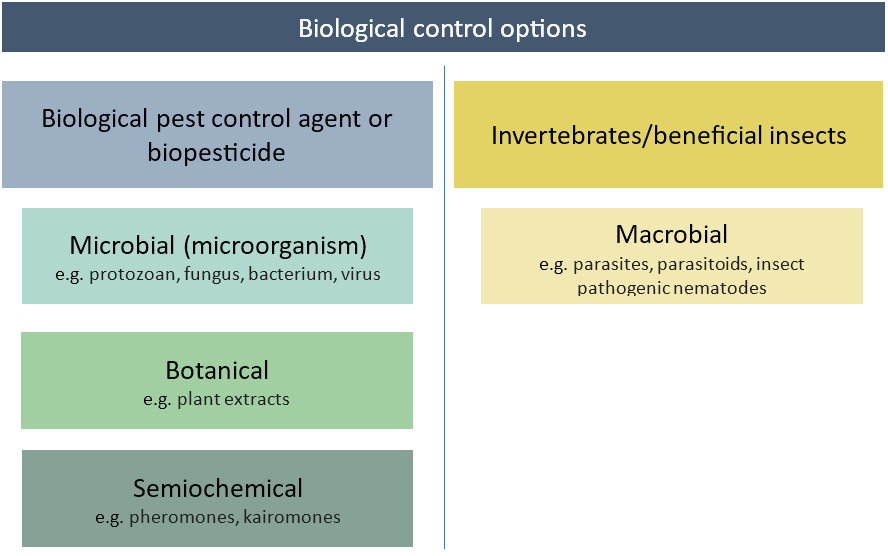Introduction: Biological Pest Control Agents
Currently, plant protection and disease vector control are based predominantly on the use of conventional (synthesised) chemical pesticides. But concerns remain about the impact of chemical pesticides on human and animal health and the environment. The development of alternative plant protection and vector control approaches such as Integrated Pest Management (IPM) and Integrated Vector Management (IVM) have been encouraged to address these concerns. Biological pest control agents can contribute to IPM and IVM as they generally pose little health or environment risk and can have good compatibility with many beneficial invertebrates used in IPM and IVM.
There is no globally agreed use of terms or definition of biological pest control agents or biopesticide but these terms usually include products with active substances that are based on microbials, botanicals or semiochemicals (FAO/WHO 2017).

In many countries, microbials, botanicals and semiochemicals are evaluated and registered following the same system as for conventional chemical pesticides. However, this approach can pose an unnecessarily high and inappropriate regulatory burden. This is because many, if not most, of the data requirements and evaluation criteria are not relevant to biological pest control agents.
Further, the level of risk resulting from use of biological pest control agents is often lower than for conventional chemical pesticides. The specifics of the evaluation of biological pesticide control agents therefore need particular attention from pesticide registration authorities.
The importation and/or use of invertebrate biocontrol agents tends to be regulated under different phytosanitary legislation and is not covered in this text.
